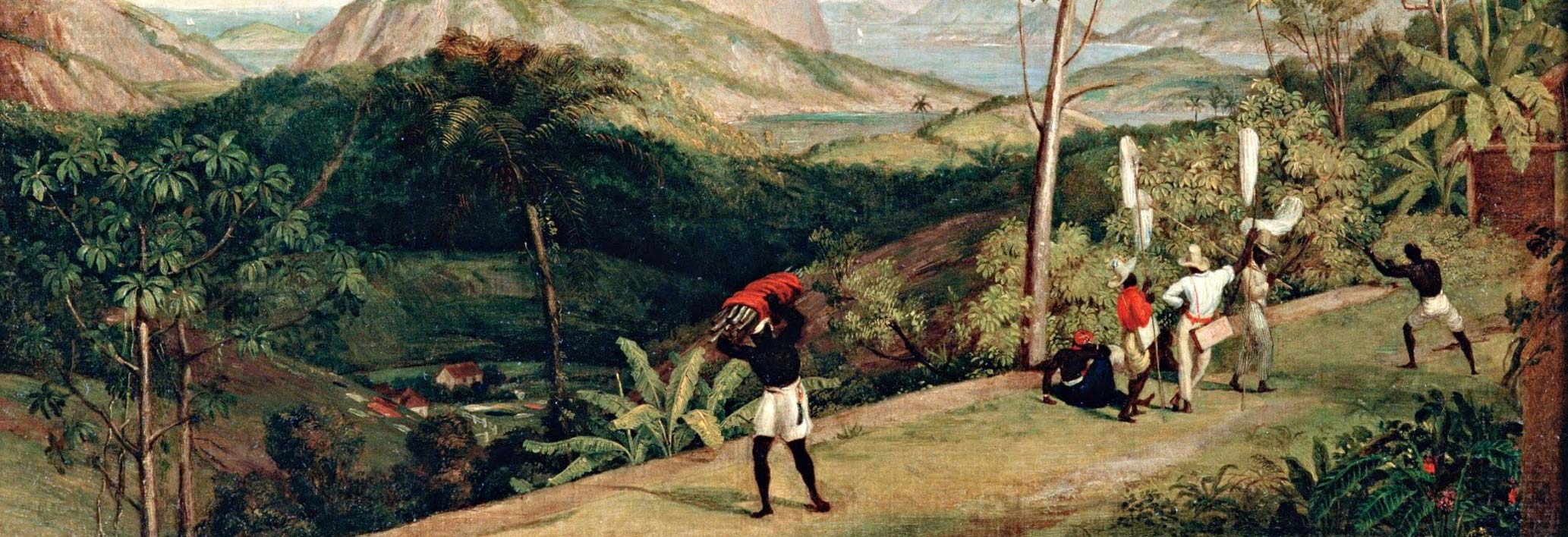The first African known to have reached what would become the United States, Juan Garrido was a black conquistador who obtained relative success as a free man in the Caribbean and Mexico. Most of the known details from Garrido’s life come from a 1538 petition in which he solicited royal favor for his participation in Spanish conquests.
Probably born in West Africa in the late fifteenth century, Garrido traveled at a young age to Lisbon. He was either free on arrival or obtained freedom while there. Garrido later went to Seville and joined a Spanish expedition sailing for the island of Hispaniola in the 1500s.
Garrido took part in military campaigns against the Hispaniola natives known as the Taíno and there he found a patron in Juan Ponce de León. As a recent arrival with little wealth, he served as a footman in Ponce de León’s 1508 conquest of Puerto Rico and the 1512-13 expedition where he claimed Bimini and La Florida for Spain. Garrido thus became the first African known to have reached the present day United States
After also serving in the conquest of Cuba, Garrido apparently returned to Puerto Rico where he had a small gold mining operation. In November 1518, he sailed west from Santiago under Hernando Cortés on what would become the conquest of the Aztec Empire in Mexico. Several native codices from the conquest period depict Garrido as Cortés's page.
In his petition to the Spanish Crown, Garrido stated that he buried the Spanish dead when the fighting against the Aztecs ended. He also built a chapel at the site of the burials in 1521 and was recognized as the first person to plant wheat in Mexico. For these services, Garrido was granted a house-plot within the city and formally made a citizen. He was also appointed to government posts as doorman of the Mexico City council, guardian of the Chapultepec aqueduct, and town crier. All three positions carried salaries and afforded him a modest degree of status within the post-conquest society. In the late 1520s, Garrido married Francisca Ramírez, a Spanish woman. The status of his spouse suggests that Garrido’s attempts to improve his status and economic position were successful. The couple would have three children.
The late 1520s and 1530s saw Garrido try gold mining in the Mexican province of Zacatula and join Cortés on an expedition to Baja California, but he returned to Mexico City by July 1536 without much success. Financial hardship drove Garrido to draft his royal petition asking for remuneration in 1538, and he would travel to Madrid to present it personally to the emperor. In the 1540s Garrido was involved in several legal cases to recover unpaid salary from his days as a doorkeeper. It appears that he died sometime between 1547 and 1550.
Garrido’s life represents the unpredictability of the conquest era. On one hand, he was able to escape slavery, fight against native empires, and even visit the court of Emperor Charles V. On the other hand, financial success and stability eluded Garrido (and many other conquistadors) as he moved from one conquest to the next.
Read the full, original biography by Jane Landers in the African American National Biography
Online Resources
“Garrido, Juan” in African American National Biography
“Garrido, Juan” in Africana: The Encyclopedia of the African and African American Experience, Second Edition
“Garrido, Juan” in Dictionary of African Biography
“Garrido, Juan” in Dictionary of Caribbean and Afro-Latin American Biography
Bibliography
Alegría, Ricardo E. Juan Garrido: El Conquistador Negro En Las Antillas, Florida, México Y California C. 1502-1540. San Juan: Centro De Estudios Avanzados De Puerto Rico y el Caribe, 1990.
Gerhard, Peter. “A Black Conquistador in Mexico.” Hispanic American Historical Review 58, no. 3 (1978): 451–459.
Landers, Jane. Black Society in Spanish Florida. Blacks in the New World. Urbana: University of Illinois Press, 1999.
Landers, Jane G.. "Garrido, Juan." African American National Biography, edited by Ed. Henry Louis Gates Jr.. , edited by and Evelyn Brooks Higginbotham. . Oxford African American Studies Center, http://www.oxfordaasc.com/article/opr/t0001/e2712 (accessed Tue Sep 10 13:47:43 EDT 2019).
Mann, Charles C. 1493: Uncovering the New World Columbus Created. New York: Vintage, 2012.
Restall, Matthew. “Black Conquistadors: Armed African in Early Spanish America.” The Americas 57, no. 2 (2000): 17–205.
Restall, Matthew. Seven Myths of the Spanish Conquest. Oxford: Oxford University Press, 2003.
Vinson, Ben, III, and Matthew Restall. “Black Soldiers, Native Soldiers: Meanings of Military Service in the Spanish American Colonies.” In Beyond Black and Red: African-Native Relations in Colonial Latin America, edited by Matthew Restall, 15–52. Albuquerque: University of New Mexico Press, 2005.
Author
Jane G. Landers and Robert C. Schwaller
Adapted by
James Almeida and Steven J. Niven
Contributing Institutions
Hutchins Center for African & African American Research, Harvard University, Cambridge, MA.
Oxford University Press (USA) African American Studies Center.





